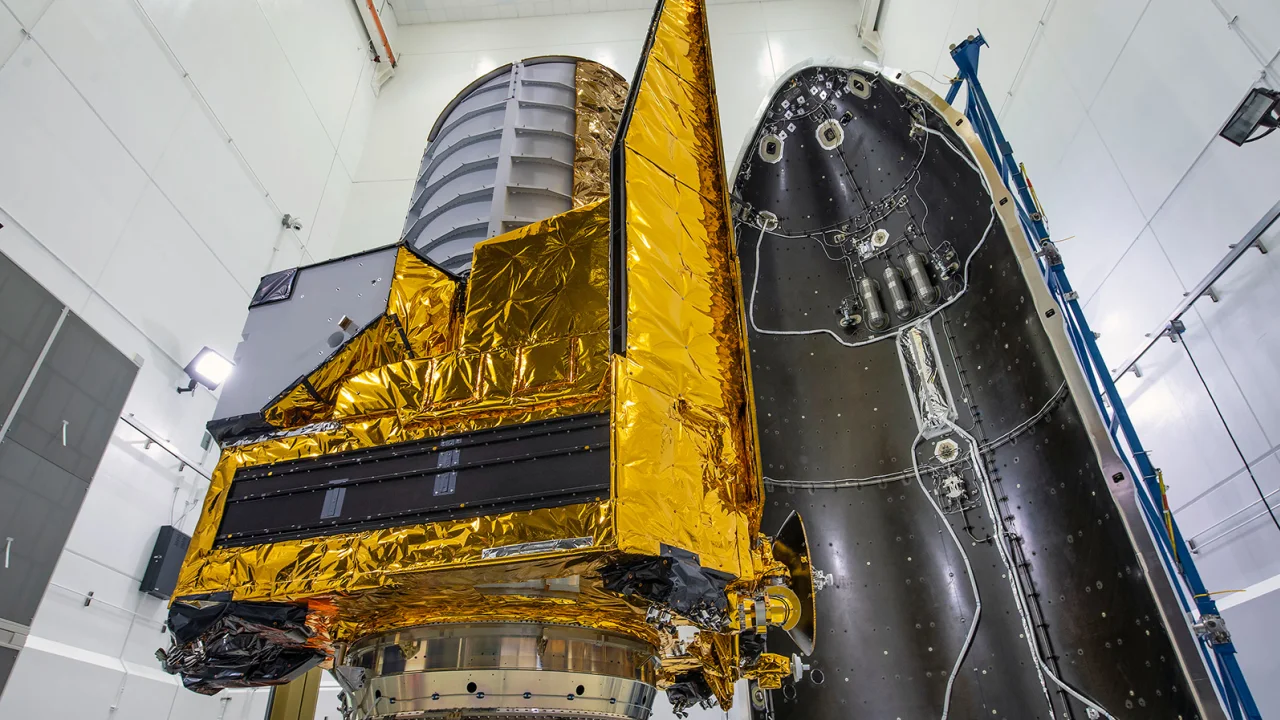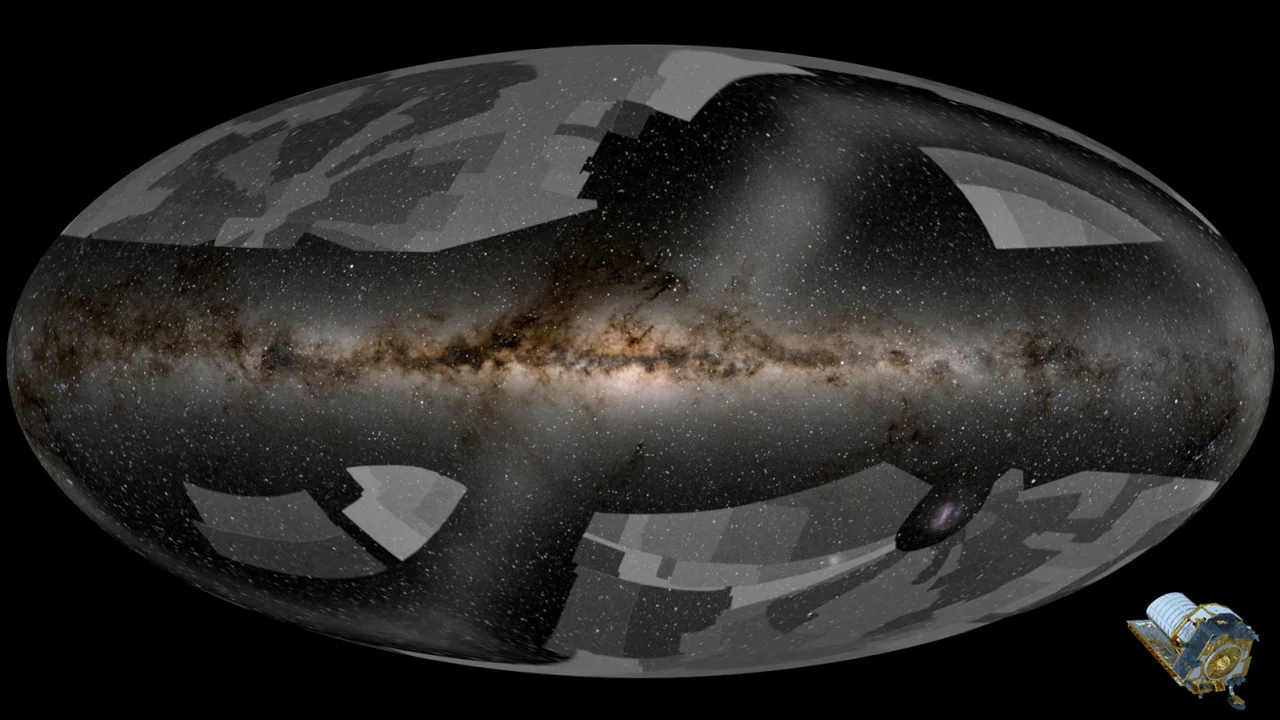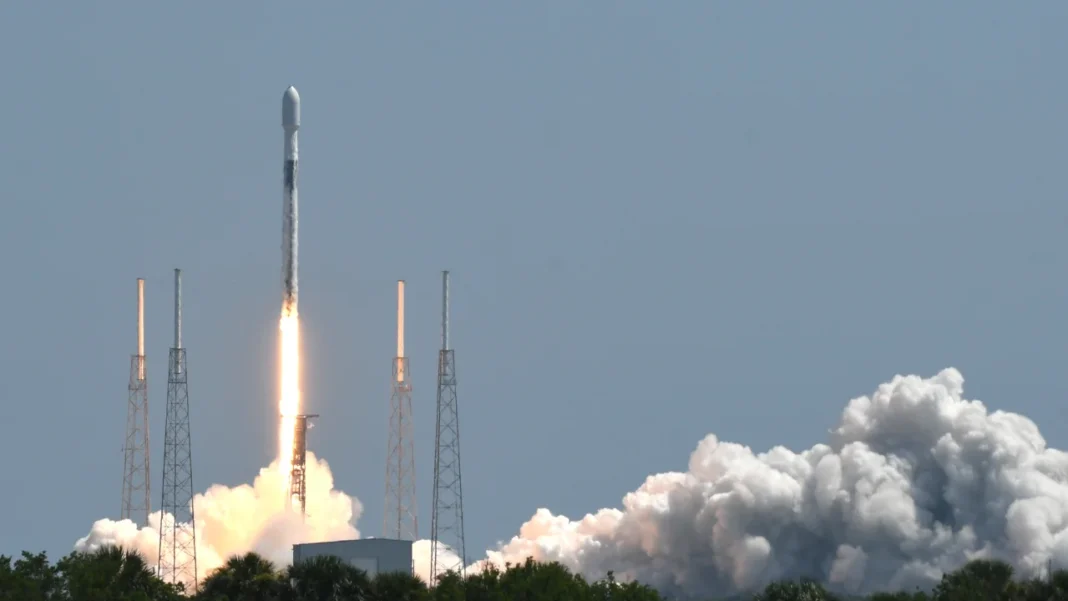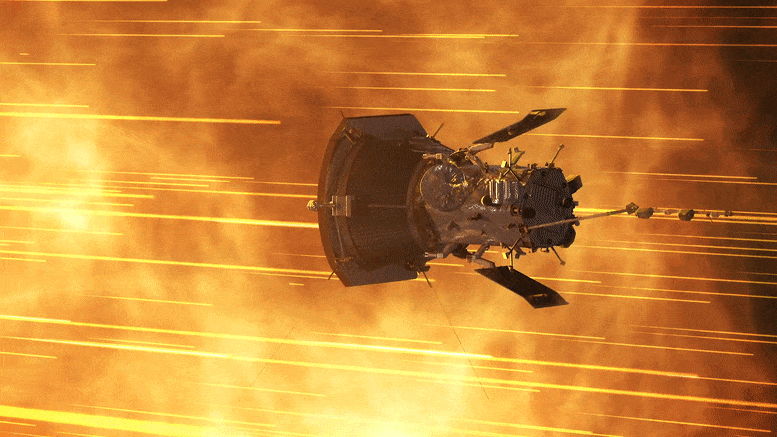The European Space Agency‘s Euclid space telescope has embarked on a groundbreaking mission to unravel some of the greatest mysteries of the universe. Launched from Florida’s Cape Canaveral Space Force Station aboard a SpaceX Falcon 9 rocket, this 1.2-meter-diameter (4-foot-diameter) telescope is set to journey to the sun-Earth Lagrange point L2, located approximately 1 million miles away from Earth. Over the next six years, Euclid will survey one-third of the sky, armed with its advanced visible light and near-infrared cameras.
Euclid’s primary objective is to explore the enigmatic “dark side” of the universe, delving into the realms of dark matter and dark energy. Dark matter, accounting for 85% of the universe’s total matter, remains an elusive mystery yet to be directly detected. Dark energy, on the other hand, is a perplexing force believed to contribute to the universe’s accelerating expansion. By comprehending these cosmic enigmas, astronomers hope to gain insights into the composition of the universe, its evolution, and the fundamental nature of gravity.

Equipped with cutting-edge technology, Euclid aims to create an unprecedented three-dimensional map of the universe. Its observations of billions of galaxies, extending up to 10 billion light-years away, will reveal how dark energy has influenced the stretching and pulling of matter throughout cosmic history. The telescope’s imaging capabilities surpass those of ground-based surveys, providing four times sharper images. Additionally, Euclid’s wide perspective enables it to capture data from a sky region 100 times larger than that of NASA’s James Webb Space Telescope.
Collaboration lies at the heart of Euclid’s mission, involving contributions from NASA and over 2,000 scientists across 13 European countries, the United States, Canada, and Japan. Its comprehensive catalog will include 1.5 billion galaxies, documenting their shapes, masses, and stellar birth rates. Beyond this, Euclid’s near-infrared vision may unveil hidden objects within our Milky Way galaxy, such as brown dwarfs and ultra-cool stars.

Excitingly, Euclid will soon be joined in orbit by the Nancy Grace Roman Telescope in May 2027. Both telescopes will investigate cosmic acceleration, creating complementary three-dimensional maps of the universe. With their enhanced precision and breadth of observation, these telescopes promise to shed light on the universe’s accelerated expansion, marking a new era of exploration and understanding.
The Euclid and Roman telescopes, working in tandem, hold the key to unlocking the mysteries that have captivated astrophysicists for years. Their combined efforts will enable astronomers to delve deeper into the universe’s secrets and gain a more comprehensive understanding of its intricate workings. The future is bright for astrophysical discoveries and our quest to comprehend the cosmos.
- One of the Biggest Mysteries of the Universe: Exploring the enigmatic realms of dark matter and dark energy, which make up a significant portion of the universe’s composition, stands as one of the most captivating mysteries that continue to intrigue scientists and astronomers alike.
- The Most Mysterious Thing in the Universe: The universe presents us with a plethora of captivating enigmas, but one of the most intriguing and mysterious phenomena is the elusive nature of dark matter. This unseen substance, believed to permeate the cosmos, holds the key to unraveling the secrets of the universe’s structure and behavior.
- The Biggest Mystery of All Time: Throughout history, numerous mysteries have captivated human curiosity, but the ultimate enigma that has endured the test of time is the question of our existence and the origin of the universe itself. Understanding the fundamental beginnings and the underlying mechanisms that shaped our reality remains one of the most profound and timeless mysteries.
- The 7 Mysteries of the World: The concept of the “Seven Wonders of the World” traditionally encompasses awe-inspiring architectural and natural marvels. However, when it comes to the mysteries of the world, the list expands to include enigmatic phenomena such as the Bermuda Triangle, the Nazca Lines, Stonehenge, the Loch Ness Monster, the mystery of the Sphinx, the Voynich Manuscript, and the existence of extraterrestrial life. These captivating mysteries continue to fuel our imagination and drive our pursuit of knowledge.











